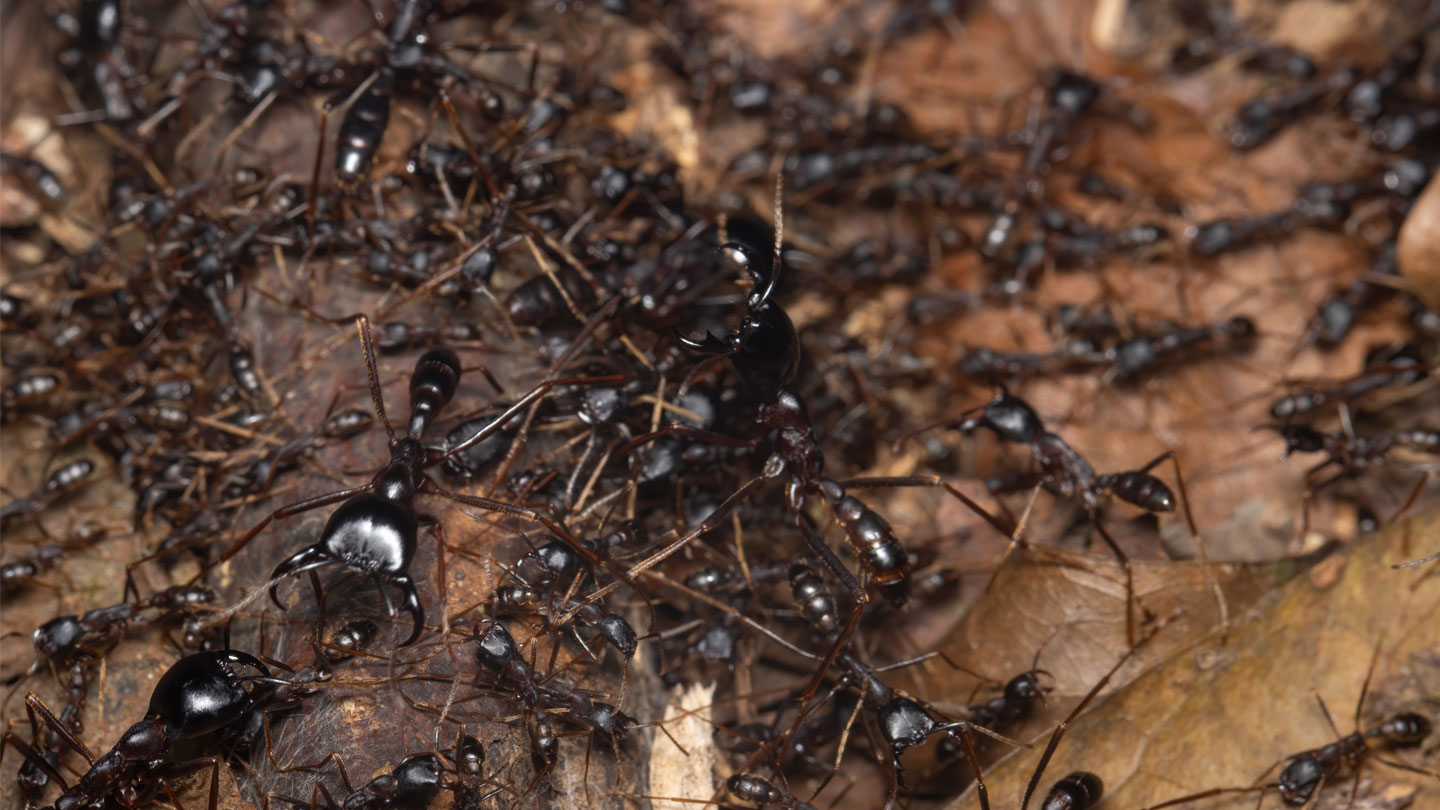COIMBATORE, India — To better understand Equatorial Guinea’s tropical birds, ornithologists Luke L. Powell and Patricia Rodrigues scan the ground rather than the trees. They are searching for nests of driver ants (Dorylus spp.). These voracious predators will march out of their underground nests and fan out into a meters-wide swarm, flushing out insects and worms from undergrowth. From the trees, birds swoop down to catch the fleeing insects. And where the ant swarms go, the birds follow.
Ant-following birds are well studied in the neotropical Americas. In Africa, however, “people have seen birds follow ants, but nobody has really looked” to see whether the animals have a specialized relationship, says Rodrigues from Louisiana State University in Baton Rouge.
The first step to figuring that out is finding driver ant nests. Since 2020, Rodrigues has spent weeks at a time scrutinizing the ground for ants in a forest near Ciudad de la Paz. When she finds them, she knows to keep her distance. “They’re super-duper aggressive and they have giant mandibles that can pierce your skin,” Rodrigues says. Despite her caution, ant bites “inevitably happen”— sometimes the ants fall out of trees onto her and her colleagues.
Rodrigues follows the ants as they carry food back to their nests. Since driver ants are nomadic, often relocating their colonies, she checks every nest daily in case the colony starts to move. “We do a lot of walking around the block,” she says with a laugh.
2023-07-25 07:00:00
Article from www.sciencenews.org
rnrn
